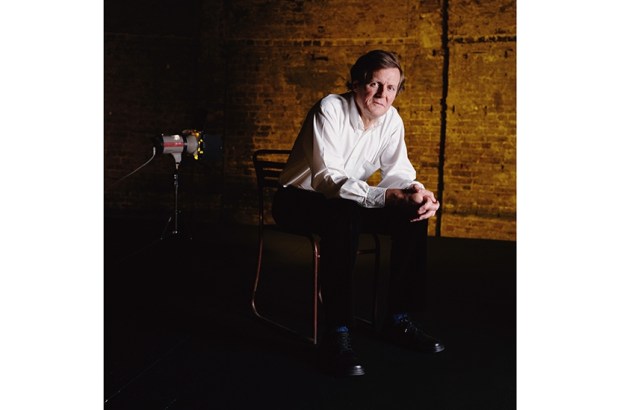Near to the heart of this wild and labyrinthine novel — on page 516 of 808 — a character in a letter addressed to his future self within the reminiscence of a disfigured and imprisoned second world war sailor who will subsequently be transformed via sorcery, surgery and sex into a medium and prophet, eventually finding his way to Scotland where he will marry his own wife again, though possibly not in that order, states the following:
My studies in magic and experimental psychology and of course alchemy suggested that the goal of magical practice, which had become the goal of art practice, was a reuniting of fractured selves across time… This feeling of union, of union with the past, the present and the future, in a place that was outside of time, well, it was palpable, to say the least. And true to our beliefs, our gamble with art changed everything.
‘A gamble with art’ is a fitting description of Monument Maker, the novel as ‘a place outside of time’, where the author can combine a huge variety of characters with a multiplicity of ideas, memories and esoteric reading. And the book can be considered an artistic gamble too, with its author’s reputation as the high stake.
It is the fourth novel David Keenan has published in as many years. This Is Memorial Device (2017), set in the post-punk scene of early 1980s Scotland, was a cult hit; For the Good Times (2019) won the Gordon Burn Prize; and last year’s Xstabeth attracted attention from figures as diverse as Edna O’Brien, Salena Godden and Kim Gordon. Monument Maker features references to characters and locations from its predecessors in what is increasingly looking like either a cycle of novels or one vast fictional gallimaufry. Several more instalments are in the works. That Monument Maker is the largest and the weirdest to date should detract neither from its ambition nor the risk it represents in its own right.
Keenan has said that the novel took him ten years to write, though ‘construct’ may be a better term for a book inspired by the architecture of the cathedral. It is dedicated ‘To the Glory of God’ and encompasses four books identified as ‘Nave’, ‘Transept’, ‘Apse’ and ‘Choir’, plus several ‘ecclesiastical’ appendices. Most of the sections are stories within stories: memoir, biography, translation, supernatural tale, diary, letter and so on. This allows Keenan to keep moving, stylistically, geographically and temporally: a summer in the South of France in a house once occupied by the composer Frederick Delius; the Siege of Khartoum, Sudan, 1884; Crete during the second world war; the surface of the moon in the not too distant future.
When they come, these shifts are disorientating, not to say baffling. But they are also crucial to the process of reading the book, one achievement of which is to unite the personal, the archetypal and the fantastic in a way that offers the reader the satisfaction of narrative (or narratives) without being reliant on ‘what happens next’. The book moves backwards and forwards in time, like a connected series of dreams or visions:
I thought of the trenches, and I flitted back there in my mind, via the secret tributaries that tunnel beneath the page, and I imagined a literary underground, a book as a tomb for language and of a literary Valley of the Kings, a vast subterranean network connected across time and space and all that would entail, the empty bunkers, the daring passageways, the perpetual lack of sunlight…
Monument Maker is an experimental novel informed by religion, art, the occult, sex, Tarot, alcohol, signs, symbols and other experimental novels. It evokes the work of Malcolm Lowry, Clarice Lispector, Leonora Carrington, Arthur Machen, Philip K. Dick and even John Fowles. Like them, Keenan is a literary disruptor, and sees himself as such.
He is also a writer for whom the lived experience and the imaginative one, drawn from books, films and music, are both vital and interchangeable. This is not an easy or straightforward read, but it crackles with the energy of someone challenging themselves to make something new, meaningful and personal with the tools at their disposal. By turns it is obscure, romantic, terrifying, funny and — an underrated and unfashionable literary virtue — sincere. If occasionally I was baffled, well, I enjoyed being baffled, while also feeling I was this close to ‘decoding’ the book. I would love to read it again. From deep within the appendices, another clue to this book’s true nature: ‘Works of rogue imagination: they were impossible to police.’
Got something to add? Join the discussion and comment below.
Get 10 issues for just $10
Subscribe to The Spectator Australia today for the next 10 magazine issues, plus full online access, for just $10.
You might disagree with half of it, but you’ll enjoy reading all of it. Try your first month for free, then just $2 a week for the remainder of your first year.














Comments
Don't miss out
Join the conversation with other Spectator Australia readers. Subscribe to leave a comment.
SUBSCRIBEAlready a subscriber? Log in